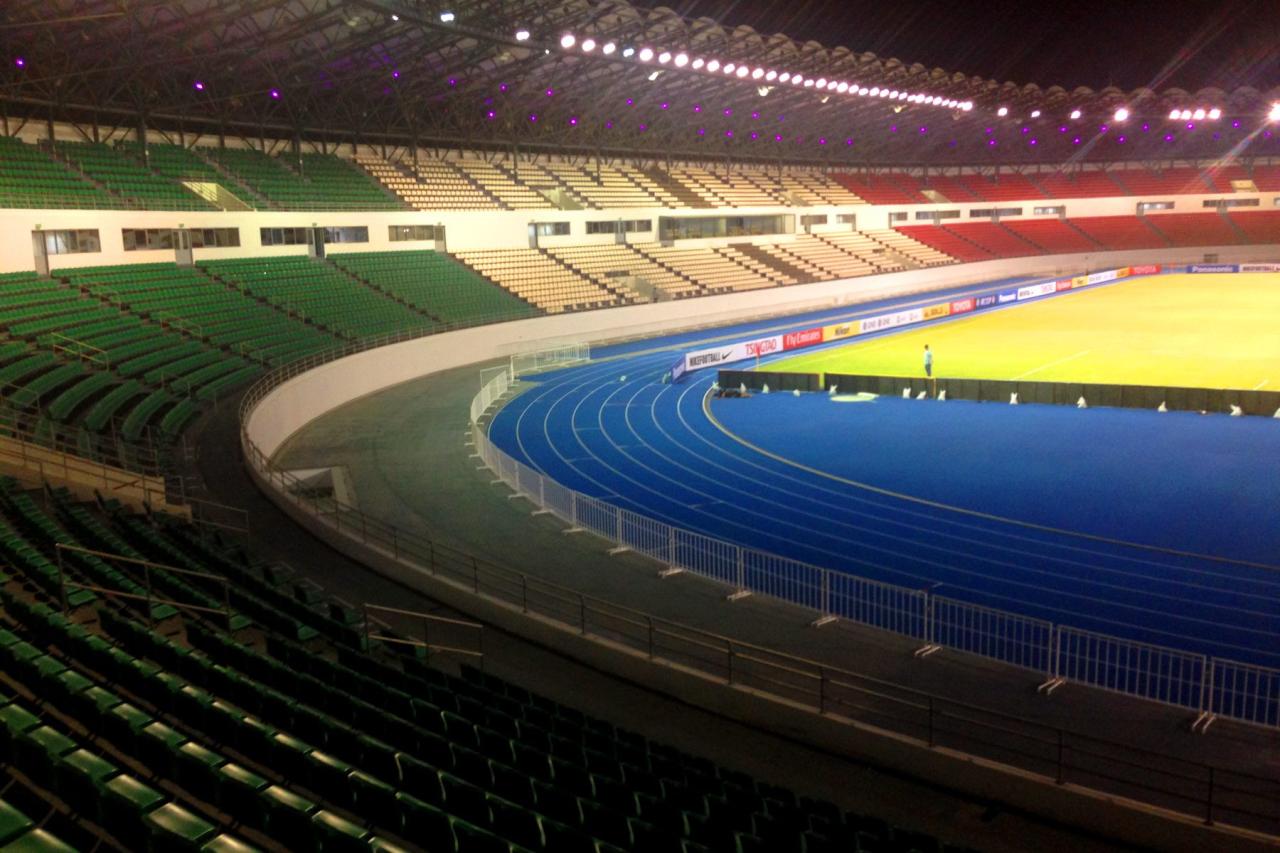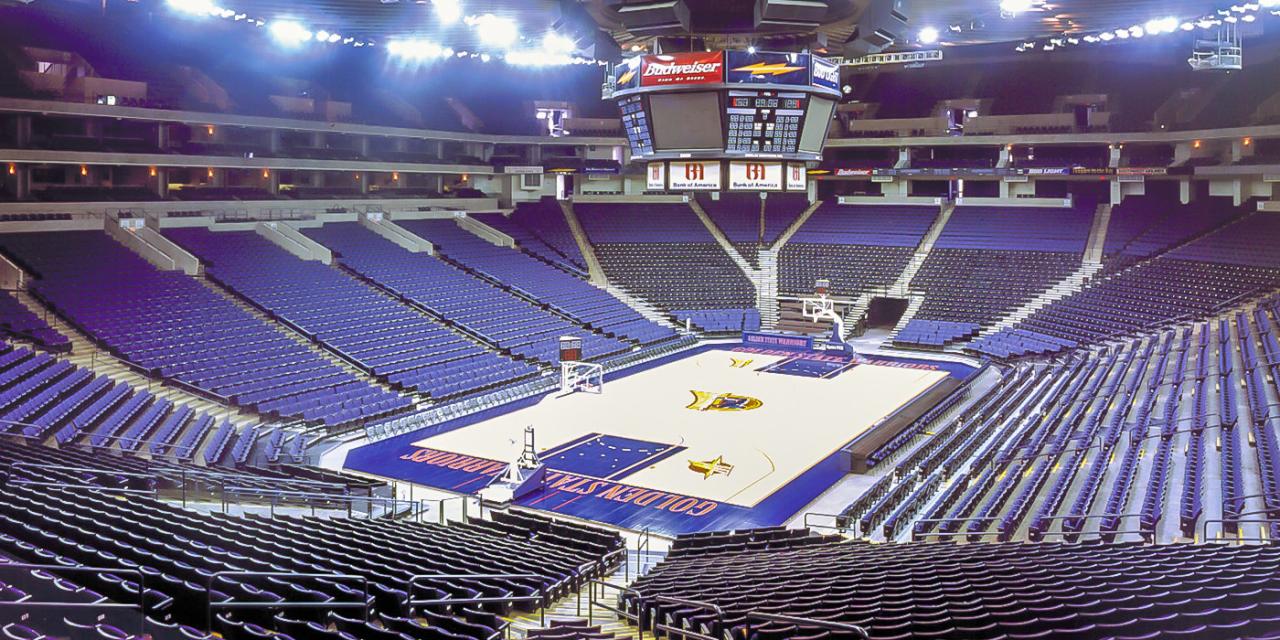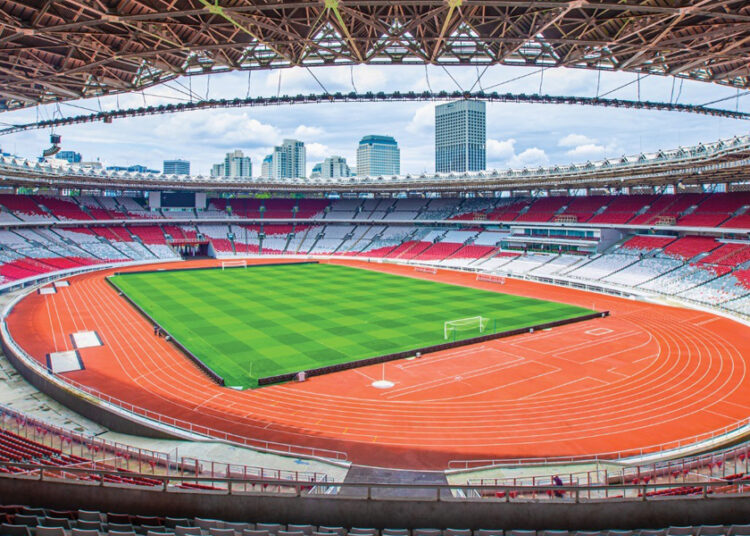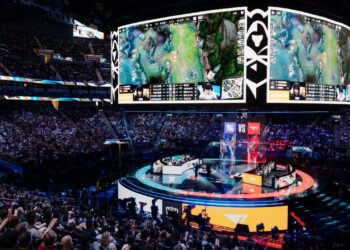The evolution of sports and entertainment venues is a testament to human ingenuity, constantly striving to enhance the spectator experience, optimize operational efficiency, and integrate cutting-edge technology. Far more than just concrete and steel structures, future arena designs are poised to become immersive, interactive, and sustainable hubs, fundamentally redefining how fans engage with live events. These architectural marvels are transforming from mere backdrops into active participants in the spectacle, offering unparalleled comfort, connectivity, and customization. This comprehensive article delves into the groundbreaking innovations shaping the next generation of arenas, exploring the architectural philosophies driving their creation, the technological advancements embedding intelligence into their very fabric, and the profound impact they will have on urban landscapes and fan engagement worldwide.
Redefining the Fan Experience

At the heart of every future arena design is a relentless focus on elevating the fan experience, making every visit more comfortable, engaging, and memorable.
A. Seamless Arrival and Entry
The journey begins long before a fan reaches their seat, with designs prioritizing efficiency and hospitality from the moment they arrive.
- Smart Ticketing Systems: Utilizing QR codes, facial recognition, or even blockchain technology for secure and rapid entry, eliminating physical tickets and long queues. This reduces bottlenecks and improves flow.
- Integrated Transportation Hubs: Designing arenas with direct access to public transport, ample parking with smart guidance systems, and dedicated ride-sharing drop-off points to minimize traffic congestion and streamline arrival.
- Digital Wayfinding: Interactive kiosks, mobile apps, and dynamic signage to guide fans effortlessly from entry points to their seats, concessions, restrooms, and other amenities. This vastly improves navigation in large, complex venues.
- Pre-Security Screening: Implementing advanced, less intrusive security technologies to expedite the screening process while maintaining high safety standards.
B. Immersive In-Venue Engagement
Once inside, future arenas will envelop fans in a truly immersive environment, blending physical and digital experiences.
- Dynamic LED Displays: Massive, high-resolution LED screens, beyond just the main scoreboard, wrapping around concourses, seating bowls, and even exterior facades. These can display real-time stats, interactive content, fan cam feeds, and commercial messages, creating an ever-changing visual spectacle.
- Augmented Reality (AR) Experiences: Leveraging AR technology through fan’s mobile devices or smart glasses.
- Overlaying Player Stats: Allowing fans to point their phone at a player on the field and see their real-time statistics, biographical information, or heat maps.
- Virtual Replays: Watching replays from different angles or with special effects overlaid directly onto the live action.
- Interactive Games: Engaging fans with AR-powered games or scavenger hunts within the venue.
- Personalized Content Delivery: Mobile apps delivering tailored content to each fan based on their preferences, seating location, and purchase history. This could include personalized highlight reels, betting odds, or exclusive behind-the-scenes access.
- Holographic Technology: While still emerging, the potential for holographic projections to create virtual performers, interactive mascots, or even bring historical moments to life within the arena.
C. Enhanced Comfort and Accessibility
Future designs prioritize universal accessibility and superior comfort for all attendees.
- Ergonomic Seating: More spacious, comfortable seats with improved sightlines and potentially integrated charging ports or small tables. VIP and premium seating areas will offer even greater luxury.
- Climate Control and Air Quality: Advanced HVAC systems to maintain optimal temperatures and ensure high air quality throughout the venue, regardless of external weather conditions.
- Universal Accessibility: Designing facilities that are fully accessible to individuals with all types of disabilities, including wider walkways, accessible restrooms, sensory rooms for neurodiverse individuals, and assistive listening devices.
- Family-Friendly Zones: Dedicated areas for families with young children, including play zones, private nursing stations, and accessible changing facilities.
Intelligent Infrastructure
The smart arena of the future is built upon a sophisticated technological infrastructure that powers its advanced features and optimizes operations.
A. Hyper-Connectivity and 5G Integration
High-speed, ubiquitous connectivity is the lifeline of the modern smart arena.
- Robust Wi-Fi Networks: Providing seamless, high-bandwidth Wi-Fi access throughout the venue, allowing thousands of fans to simultaneously stream, share, and connect without slowdowns.
- 5G Enabled Networks: Leveraging 5G technology for ultra-low latency and massive connectivity, essential for supporting AR/VR experiences, real-time data streaming, and autonomous services. This also enables new broadcast capabilities and remote production.
- IoT (Internet of Things) Sensors: Thousands of sensors embedded throughout the arena.
- Crowd Flow Management: Monitoring crowd density and movement to identify bottlenecks, optimize pedestrian flow, and enhance safety.
- Smart Restrooms: Tracking usage and signaling cleaning staff when needed, improving hygiene and efficiency.
- Environmental Monitoring: Sensors for temperature, humidity, and air quality ensure optimal comfort and energy efficiency.
B. Data Analytics and AI-Powered Operations
The collection and analysis of vast amounts of data will drive operational excellence and personalized experiences.
- Predictive Analytics: AI models analyze historical data (e.g., concession sales patterns, traffic flows, weather forecasts) to predict future demand, optimize staffing levels, and pre-empt potential issues.
- Dynamic Pricing: Utilizing AI to adjust ticket prices, concession item prices, or even parking rates in real-time based on demand, time remaining, and other variables.
- Personalized Marketing and Sales: Analyzing fan data to offer targeted promotions, merchandise discounts, or food/beverage recommendations via their mobile devices.
- Security and Surveillance: AI-powered video analytics for enhanced security monitoring, identifying suspicious behavior, managing crowd control, and assisting in emergency responses. This allows security personnel to be more proactive and efficient.
C. Robotics and Automation
Automation will streamline operations, enhance security, and improve services.
- Autonomous Cleaning Robots: Deploying robots for efficient and hygienic cleaning of concourses, restrooms, and seating areas before, during, and after events.
- Delivery Robots: Robots delivering food, beverages, or merchandise directly to seats or designated pick-up points within the arena, reducing wait times and improving convenience.
- Security Drones and Robots: Utilizing drones for aerial surveillance and robots for patrolling secure areas, enhancing security coverage and reducing human risk in dangerous situations.
- Automated Concessions: Self-serve kiosks, smart vending machines, and potentially even robotic food preparation for faster service and reduced queues.
Sustainability and Environmental Stewardship

Future arenas are being designed with a strong commitment to environmental responsibility, minimizing their ecological footprint.
A. Renewable Energy Integration
Harnessing clean energy sources to power the venue.
- Solar Panels: Large-scale solar arrays on roofs or adjacent properties to generate clean electricity.
- Wind Turbines: In suitable locations, micro-wind turbines could supplement energy generation.
- Geothermal Heating/Cooling: Utilizing the earth’s stable underground temperature to reduce energy consumption for climate control.
B. Water Conservation and Management
Implementing strategies to reduce water consumption and manage runoff.
- Rainwater Harvesting: Collecting and repurposing rainwater for irrigation, toilet flushing, or non-potable uses.
- Greywater Recycling Systems: Treating and reusing wastewater from sinks and showers for irrigation or toilet flushing.
- Low-Flow Fixtures: Installing water-efficient toilets, urinals, and faucets throughout the venue.
- Xeriscaping: Using drought-tolerant landscaping around the arena to minimize irrigation needs.
C. Waste Reduction and Recycling Programs
Minimizing waste generation and maximizing recycling efforts.
- Zero-Waste Initiatives: Designing systems to encourage comprehensive recycling, composting, and waste diversion, aiming for near-zero landfill waste.
- Reusable Packaging: Promoting reusable cups, containers, and cutlery to reduce single-use plastic waste.
- Composting Facilities: Collecting organic waste from concessions and restrooms for composting.
- Material Selection: Prioritizing the use of recycled, locally sourced, and sustainable building materials during construction.
D. Green Building Certifications
Designing and constructing arenas to meet rigorous environmental standards.
- LEED Certification: Achieving various levels of Leadership in Energy and Environmental Design (LEED) certification for sustainable building practices.
- WELL Building Standard: Focusing on aspects that impact human health and well-being within the built environment, such as air, water, nourishment, light, fitness, comfort, and mind.
Architectural Innovation
Beyond technology, the architectural design of future arenas is becoming increasingly sophisticated and symbolic.
A. Modular and Flexible Designs
Creating versatile spaces that can be rapidly reconfigured for different types of events.
- Retractable Seating and Fields: Allowing the venue to transform from a basketball court to a concert stage, or even an ice rink, in a matter of hours. This maximizes revenue potential and utility.
- Movable Walls and Divisions: Creating smaller, more intimate spaces within a larger arena for corporate events, conventions, or smaller performances.
- Adaptable Concourse Areas: Designing concourses that can be reconfigured to host different vendor setups or interactive fan zones depending on the event.
B. Iconic and Contextual Aesthetics
Arenas are becoming landmarks that reflect their surrounding urban environment and local culture.
- Unique Facade Designs: Utilizing dynamic lighting, interactive surfaces, or culturally significant motifs to create visually stunning and memorable exteriors that become part of the city’s identity.
- Integration with Urban Fabric: Designing arenas that seamlessly blend into their surrounding neighborhoods, rather than acting as isolated monoliths. This might include public plazas, green spaces, and retail outlets that are active even on non-event days.
- Multi-Purpose Districts: Developing entire districts around arenas, including hotels, restaurants, retail, residential spaces, and entertainment venues, creating vibrant urban hubs. This maximizes economic impact and provides year-round activity.
C. Biophilic Design Principles
Incorporating natural elements and principles into the design to enhance well-being.
- Natural Light and Ventilation: Maximizing the use of natural light and promoting natural airflow to reduce energy consumption and improve indoor air quality.
- Green Spaces: Integrating living walls, indoor gardens, and outdoor plaza areas with vegetation to connect occupants with nature.
- Natural Materials: Using wood, stone, and other natural materials that evoke a sense of calm and connection to the environment.
The Impact on Urban Landscapes and Communities
Future arenas are more than just entertainment venues; they are catalysts for urban regeneration and community engagement.
A. Economic Revitalization
Large-scale arena developments often spur significant economic growth in their surrounding areas.
- Job Creation: Generating employment opportunities in construction, operations, hospitality, security, and related industries.
- Increased Tourism: Attracting visitors for major events, boosting local businesses like hotels, restaurants, and shops.
- Real Estate Development: Catalyzing investment in surrounding properties, leading to new residential, commercial, and retail developments.
B. Community Hubs
Modern arenas are being designed to serve as community assets beyond just event days.
- Public Access: Creating public plazas, green spaces, and retail outlets that are open and accessible to the community year-round.
- Community Events: Hosting local sports leagues, educational programs, health fairs, and other community-focused events.
- Connectivity: Improving infrastructure around the arena, including public transport and pedestrian walkways, benefiting local residents.
C. Smart City Integration
Arenas often serve as anchor points for smart city initiatives, testing and deploying cutting-edge technologies that can then be scaled to the wider urban environment. This includes smart traffic management, advanced security systems, and sustainable energy solutions.
Challenges and Considerations for Future Arenas
Despite the exciting innovations, the development of future arenas faces significant hurdles.
A. Cost and Funding
The sheer scale and technological complexity of these venues result in enormous construction and operational costs, requiring substantial public and private investment.
B. Technological Obsolescence
The rapid pace of technological change means that what is cutting-edge today could be outdated in a few years. Designs must incorporate adaptability and future-proofing strategies.
C. Environmental Impact (Beyond Construction)
While aiming for sustainability, the ongoing environmental impact of large-scale events (e.g., waste generation, energy consumption for lighting/cooling, fan travel) still needs careful management.
D. Cybersecurity Risks
The reliance on vast networks of connected devices and data collection makes arenas vulnerable to cyberattacks, requiring robust security protocols.
E. Balancing Fan Experience with Commercial Goals
The challenge lies in integrating sponsorships, advertising, and commercial opportunities seamlessly without detracting from the fan’s enjoyment or feeling overly commercialized.
Conclusion
Future arena designs are not simply evolving; they are undergoing a revolution, transforming into intelligent, sustainable, and hyper-connected environments that promise an unparalleled experience for every attendee. From the moment fans arrive, through the immersive in-venue spectacle, to the efficient and sustainable operations, these next-generation venues are pushing the boundaries of architecture, technology, and human experience. As they continue to integrate seamlessly into urban landscapes, acting as economic catalysts and community hubs, future arenas are set to redefine the very essence of live entertainment, ensuring that the thrill of the spectacle continues to soar to new, unimaginable heights.













